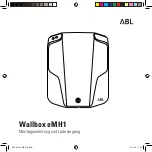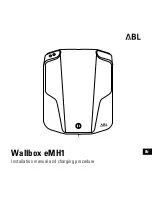
If a blown fuse is found, first ensure that the battery polarity has been correctly wired before replacing the
fuse. See next paragraph for more information on reverse battery polarity.
9.2.9. PV voltage too high
The PV voltage should never exceed the maximum rated PV voltage of the solar charger. The maximum PV voltage rating is
printed on the front or on the side of the housing of the controller.
The solar charger stops charging if the PV voltage exceeds the maximum rated PV voltage. At the same time, it will display an
overvoltage error #33, and will fast blink its absorption and float LED.
Charging will not recommence until the PV voltage has dropped 5V below the rated maximum voltage.
When investigating a high voltage issue, also look at the history of the VictronConnect App, solar charger display or GX device.
Check the highest PV voltage for each day (Vmax) and also look for past overvoltage warnings.
VictronConnect: screenshot of an Error #33 and a screenshot of the history indicating an error
Check the open circuit voltage (Voc) rating of the PV array. Ensure that it is less than the maximum rated voltage of the solar
charger. Use the MPPT sizing calculator on the
. In case the PV array is located in cold climates or if
the night temperature drops close to or below 10°C the PV array can output more than its rated Voc. As a rule of thumb, keep a
10% safety margin.
An overvoltage event can damage the solar charger, depending on how much the maximum PV voltage was exceeded. This
damage is not covered by warranty.
9.3. Batteries are undercharged
This chapter deals with possible reasons why the solar charger is not sufficiently charging the batteries and the steps you can
take to check or remedy the situation.
Some signs of undercharged batteries:
• The batteries take too long to charge.
• The batteries are not fully charged at the end of the day.
• The charge current from the solar charger is less than expected.
9.3.1. Too much DC load
The solar charger does not only charge the batteries, it also provides power for the system’s loads.
The battery will only be charged when the power available from the PV panels exceeds the power being drawn by the loads in the
system, like lights, fridge, inverter, and so on.
If the solar charger has a dedicated load output (10, 15 or 20A model), then it can easily be checked how much power the PV
array has generated and how much power is used by the loads. This is providing that all loads are connected to the load output
and are not connected directly to the battery.
If the solar does not have a load output, it might have a battery monitor installed.Then you can see how much current is going in
(or out) of the battery and the solar charger will tell you how much current the solar array is generating.
MPPT solar charger manual
Page 42
Troubleshooting and Support
















































